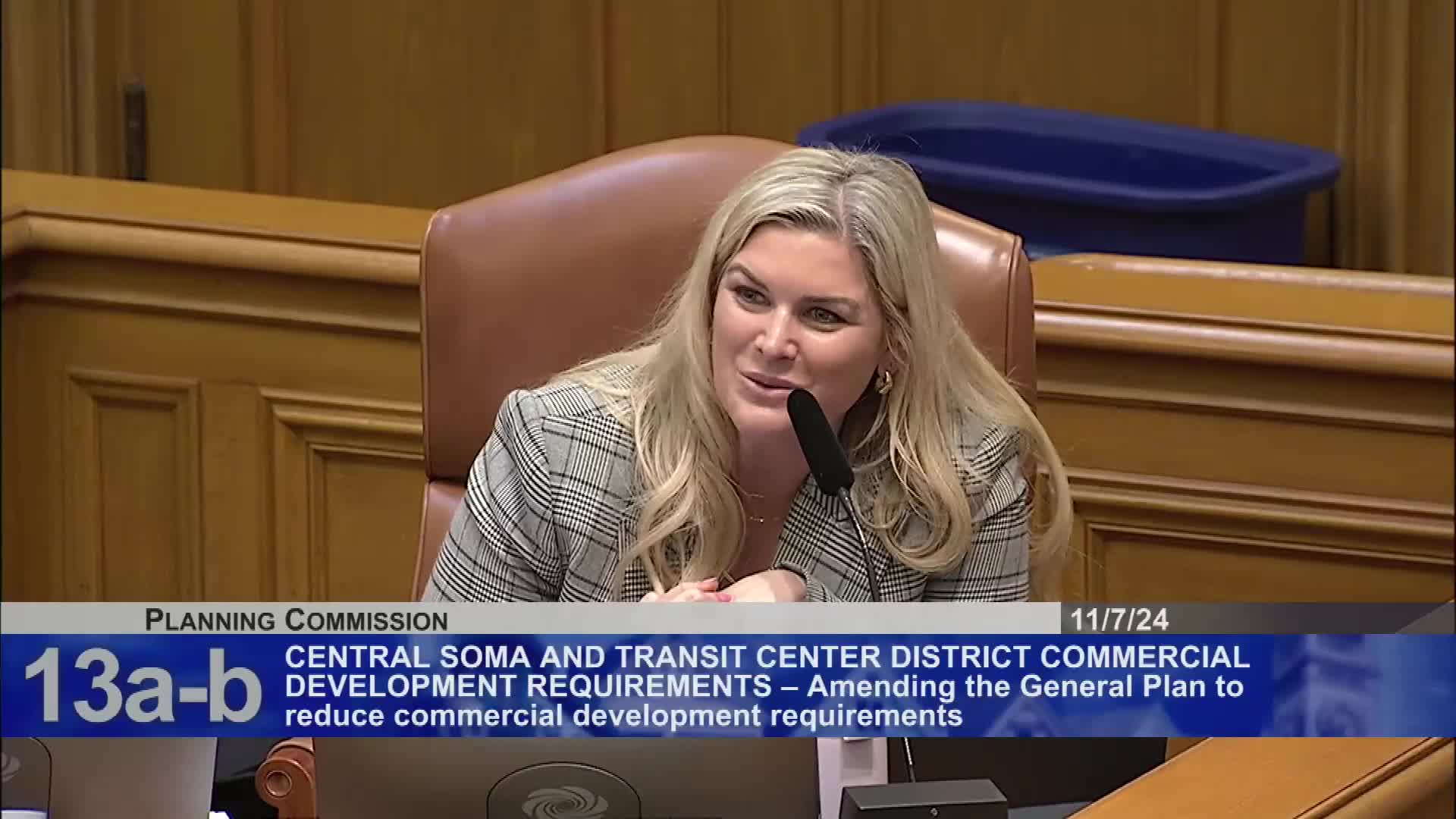Central Selma Commissioners Discuss Community Benefits Amid Office Space Challenges
November 07, 2024 | San Francisco City, San Francisco County, California
This article was created by AI summarizing key points discussed. AI makes mistakes, so for full details and context, please refer to the video of the full meeting. Please report any errors so we can fix them. Report an error »

San Francisco city officials are taking significant steps to adapt urban planning strategies in response to the changing landscape of the office market. During a recent government meeting, discussions centered on the removal of office space requirements in certain developments, particularly in the Central Soma area, where a surplus of office space has been noted.
The decision to eliminate the office component aims to facilitate the construction of housing, especially affordable units, which have become increasingly critical as the city grapples with a housing crisis. Officials acknowledged that the original plans for Central Soma relied heavily on commercial developments to generate funding for affordable housing through commercial linkage fees. However, with the current office market stagnation, these plans have become untenable.
Commissioners expressed a desire to ensure that community benefits tied to previous office developments are not lost in this transition. They discussed potential pathways to incorporate site-specific benefits into new housing projects, suggesting that zoning adjustments could allow for flexibility in meeting community needs while still promoting housing development.
The conversation highlighted a broader urban design vision, emphasizing the importance of balancing the built environment with community needs. As the city moves forward, officials are optimistic that the new approach will not only address the immediate housing shortage but also lay the groundwork for future developments that can adapt to changing market conditions.
In conclusion, San Francisco's shift away from mandatory office space in favor of housing development reflects a proactive response to current economic realities. As the city continues to reassess its strategies, there is hope that this flexibility will lead to increased affordable housing production and better community outcomes in the long run.
The decision to eliminate the office component aims to facilitate the construction of housing, especially affordable units, which have become increasingly critical as the city grapples with a housing crisis. Officials acknowledged that the original plans for Central Soma relied heavily on commercial developments to generate funding for affordable housing through commercial linkage fees. However, with the current office market stagnation, these plans have become untenable.
Commissioners expressed a desire to ensure that community benefits tied to previous office developments are not lost in this transition. They discussed potential pathways to incorporate site-specific benefits into new housing projects, suggesting that zoning adjustments could allow for flexibility in meeting community needs while still promoting housing development.
The conversation highlighted a broader urban design vision, emphasizing the importance of balancing the built environment with community needs. As the city moves forward, officials are optimistic that the new approach will not only address the immediate housing shortage but also lay the groundwork for future developments that can adapt to changing market conditions.
In conclusion, San Francisco's shift away from mandatory office space in favor of housing development reflects a proactive response to current economic realities. As the city continues to reassess its strategies, there is hope that this flexibility will lead to increased affordable housing production and better community outcomes in the long run.
View full meeting
This article is based on a recent meeting—watch the full video and explore the complete transcript for deeper insights into the discussion.
View full meeting
